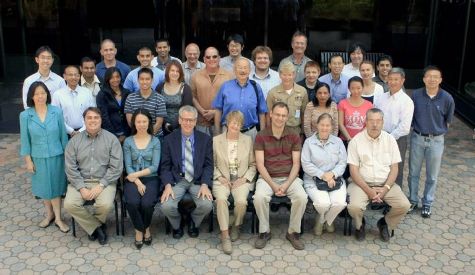Our Science – LCC Website
Laboratory of Comparative Carcinogenesis

|
Research
Our research interests focus on the normal and aberrant organismal and cellular events and signaling pathways that can enhance or inhibit tumor development or other disease processes. Examples of research themes currently under investigation in our Laboratory's four Sections include the following:
Chemistry Section:
Drugs under development in this laboratory that generate controlled fluxes of the multifaceted biological signalling agent nitric oxide on contact with physiological fluids have shown promise in anticancer applications. Collaborations with investigators in other disciplines have also shown our drugs to promote healing of injured arteries, protect the liver from ischemic or toxic injury, induce penile erections, reduce clot formation, reverse vasospasm, and relieve pulmonary hypertension, suggesting significant clinical potential. See http://home.ncifcrf.gov/lcc/nitricoxide/.
Cellular Pathogenesis Section:
The K-ras gene is frequently mutated in lung adenocarcinomas and other cancers of epithelial origin. Recently, it has become apparent that normal K-ras functioning is associated with growth arrest and cell differentiation in peripheral lung epithelial cells. We have demonstrated that normal K-ras protein and activity are markedly increased during confluence-induced growth arrest in non-transformed lung epithelial cells, both mouse and human. We are investigating the nature and mechanism of this effect by use of proteomic and microarray approaches. Exploration of the role of mutant K-ras in tumorigenesis has led to the hypothesis that this protein causes an increase in reactive oxygen, which contributes to genetic instability and tumor progression. Also, since normal K-ras does not drive cell proliferation, we search for alternative pathways driving the cell cycle in lung epithelial cells, and have strong evidence implicating a TGFalpha/ErbB/Akt/cyclin D1 cascade.
Chromium(III), a common industrial exposure chemical, causes increased neoplasms in offspring after exposures of fathers before mating. Since the metal could not be found in sperm, an indirect mechanism is postulated, involving alterations in imprinted gene expression controls in the sperm and manifested by altered hormone levels in the offspring. In support of this, chromium(III) treatment of fathers was found to result in marked alteration in levels of serum corticosterone in offspring. Insulin-like growth factor 1 was also sometimes affected. Microarray analysis revealed correlated changes in hepatic insulin-like growth factor binding protein 1 and several other genes. Ongoing experiments are focused on other paternal manipulations, including diet, examination of sperm for changes in gene methylation, and continued use of microarray to scan for gene expression alterations in the offspring.
Metabolism and Cancer Susceptibility:
Epigenetic modulation of metabolism by environmental influences may play an important role in carcinogenesis. This paradigm includes nitric oxide, hypoxia, extracellular matrix degradation and especially the proline cycle and its metabolites. Cancer susceptibility genes, targets for the aforementioned metabolic modulation, include adenomatous polyposis coli (Apc), p53, PEA3, COX-2 and HIF-1alpha. For example, we showed that nitric oxide stimulates the interaction of PEA3, a member of the Ets family of transcriptional factors, and P300, a transcription co-regulator, in activating the COX-2 promoter. Other studies focusing on the proline cycle showed that: 1) proline oxidase (POX) a.k.a. proline dehydrogenase, is a p53-induced gene; 2) hyperexpression of POX generates reactive oxygen species and induces p53-independent apoptosis; 3) the POX-induced apoptosis depends on the mitochondrial generation of superoxide. Studies of POX gene regulation and its metabolic consequences are underway. Additionally, we are performing studies to translate these in vitro cellular effects to carcinogenesis in athymic mice.
Inorganic Carcinogenesis Section:
Inorganic arsenic is a human carcinogen and a major concern world-wide as a drinking water contaminant. Although clearly carcinogenic in people, it has been difficult to produce tumors in rodents, and the absence of rodent models has made defining mechanisms of arsenic carcinogenesis difficult. We recently developed a transplacental carcinogenesis model for arsenic in mice, where pregnant animals are exposed to sodium arsenite in the drinking water and their offspring are observed for development of tumors in adulthood. Arsenic was a very effective carcinogen in this treatment scenario, producing a high incidence of hepatocellular carcinomas, and benign and malignant tumors of the lung, ovary and adrenal. Both the liver and lung are target sites of arsenic carcinogenesis in humans. This model provides the first unambiguous demonstration of the carcinogenicity of inorganic arsenic in animals and provides an important model for future analysis of molecular mechanisms in tissues of human relevance.
This page was last updated on 9/11/2008.

